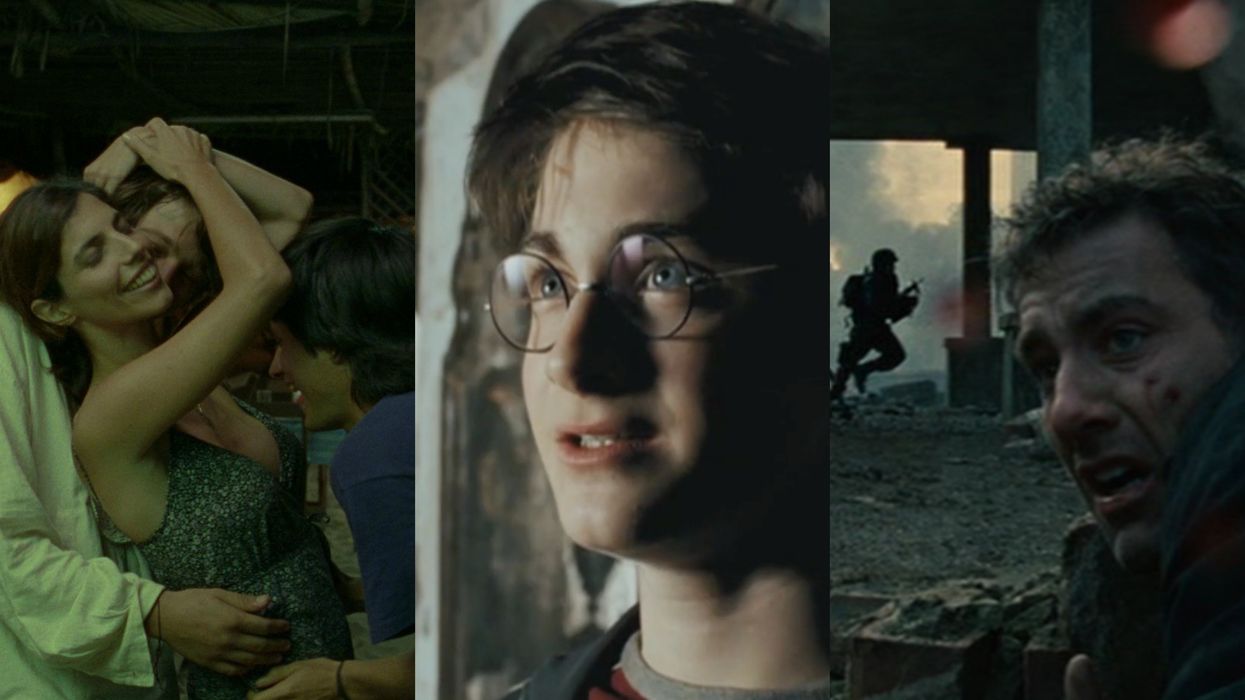3 Different Ways Alfonso Cuarón Uses Long Takes in His Films
The long take is not only an aesthetic choice, but a utilitarian one as well.

Alfonso Cuarón has made some incredible films that feature his signature "long take", a prolonged, uninterrupted shot. He has used this technique in many of his films, from Y Tu Mamá También to his latest film Gravity. But what's the point of a long take? Why does Cuarón insist on using them in his films? Well, in this video essay, Nathan Shapiro explores three of Cuarón's films that, both, contain long takes, as well as differ greatly in genre and narrative content in hopes to explain their function apart from visual style and aesthetics.
Cuarón's films Y Tu Mamá También (shot by Chivo Lubezki), Harry Potter and the Prisoner of Azkaban (shot by Michael Seresin), and Children of Men (shot by Chivo Lubezki) couldn't be more different in terms of story: one is a sexually charged drama, another is a magical children's film, and the last is a post-Apocalyptic sci-fi thriller—none of which have much in common besides Cuarón's direction and his signature long take.
So, why? Why go through all of the trouble to choreograph the actors, camera movements, special effects, and stunts just to get a shot that lasts a little longer than usual? Well, to understand the why, you have to know the what. What is the long take revealing to the audience in the scene? What emotions is it trying to evoke?
In the scene from Y Tu Mamá También, the three main characters Tenoch, Julio, and Luisa sit at a bar and get drunk together after airing all of their dirty, adulterous laundry. In a film largely about sex, repression, and letting go, this is the most intimate scene in it and Cuarón's, as well as Lubezki's approach to capturing that intimacy is to allow the audience to just—hang out with the characters, to pull up a chair for a while and become a part of the moment.

Finally, Cuarón uses the long take in the scene from Children of Men in order to elicit emotions from the audience that are similar to the ones being experienced by the characters in the film. So, by going handheld and running through the gauntlet of gunfire and explosions right alongside Theo (Clive Owen) and his group, the audience can feel like they too are in danger and feel the fear and anxiety the others in the scene must be feeling. The camera becomes the viewer's POV, which creates an entirely immersive experience. (Cuarón and Lubezki do this repeatedly in the film, namely in the famous car scene.)

Shapiro's explanation of how Cuarón uses these single, sustained shots to create more engaging, immersive narratives reveals just how versatile the long take is. They're beautiful, stylish, and certainly a technique only a great DP can pull off well, but they also have the unique ability to engross audiences and pull them from their seats and into the world of the film.
Source: Nathan Shapiro











